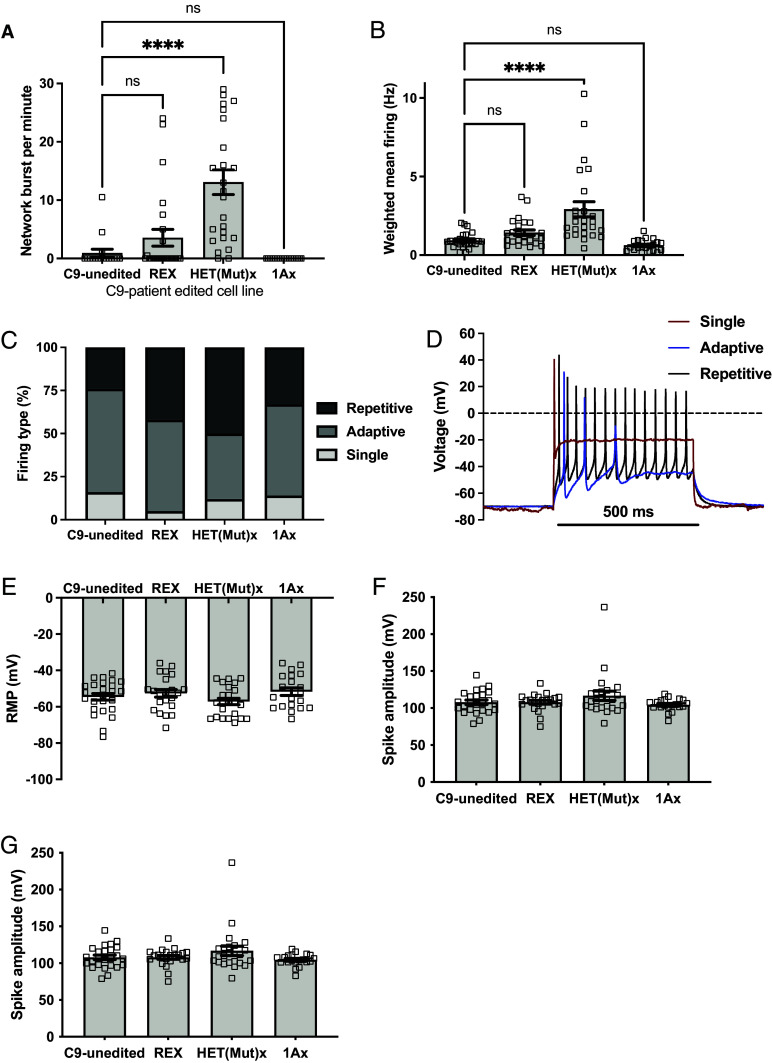Fig. 5.
Improved in vitro neuronal electrophysiological function after removal of the C9orf72 mutation. (A) C9-unedited and 1Ax 3-wk-old induced neurons showed minimal to no network bursting activity on MEAs (defined as burst events detected simultaneously from multiple electrodes within a single array). REx and HET(Mut)x showed network burst activity, with HET(Mut)x activity significantly increased compared to C9-unedited (1-way ANOVA F(3,84) = 17.3, P = 0.0003; ****P < 0.0001 by Tukey’s multiple comparison’s post hoc test). (B) Mean spontaneous firing rates weighted for electrodes showing activity on MEAs was significantly increased in HET(Mut)x compared to C9-unedited (1-way ANOVA F(3,89) = 13.3; P < 0.0001; ****P < 0.0001 by Tukey’s multiple comparison’s post hoc test). (C and D) Whole-cell patch clamp was used to identify the activity of individual neurons 40 d postinduction. Firing activity was measured during a 500 ms, 2 nA depolarizing current injection. Cells were binned into those firing a single action potential (single; D, red line), more than 1 action potential but with cessation of activity before 500 ms (adaptive; D, blue line), or repetitive firing that lasted the entire 500 ms (repetitive, D, black line). (C) Repetitive firing was increased, and adaptive firing decreased, in REx and HET(Mut)x compared to C9-unedited (χ2 test = 21.1 (6 degrees of freedom); P < 0.01). (E–G) There were no statistical differences between groups for individual action potential metrics, including (E) resting membrane potential (1-way ANOVA F(3,86) = 1.53; P = 0.2), (F) spike amplitudes (1-way ANOVA F(3,86) = 1.71; P = 0.17) and (G) action potential durations at 90% repolarization (APD90) (Kruskal–Wallis = 6.12; P = 0.11). Error bars = SEM.

